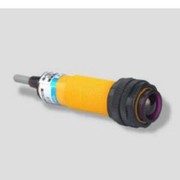Calibration and maintenance methods for time errors in astronomical timer switches
Jun 17, 2025
Astronomical timer switches rely on the longitude and latitude information recorded by the built-in chip and astronomical algorithms to calculate sunrise and sunset times. After long-term use, time errors may occur due to various factors. Once an error is detected, the following calibration and maintenance steps can be taken:
I. Time calibration
(I) Manual calibration
Confirm current location information: Check whether the longitude and latitude settings in the timer switch match the actual usage location. Some astronomical timer switches allow direct modification of longitude and latitude values in the settings menu. If the actual coordinates are unknown, obtain them via a mobile phone map app and then input the accurate values into the timer switch.
Synchronize standard time: Locate the time - setting option of the timer switch. Select to synchronize with network time (if the device has networking capabilities), or manually enter the accurate Beijing time. Some high - end astronomical timer switches also support Bluetooth connection to mobile phones for automatic time synchronization, enhancing calibration efficiency.
Reset the working mode: Reset the working mode of the timer switch according to specific needs, such as different settings for weekdays and weekends, or special holiday modes. Ensure that all time parameter settings are accurate so that the timer switch operates based on the correct time reference.
(II) Automatic calibration
Some astronomical timer switches with automatic calibration functions will automatically connect to satellite signals or network time servers for calibration at regular intervals or when a significant time error is detected. Users should ensure that the device's communication module functions properly. For example, check the stability of the network connection (for devices calibrated via the Internet) and the normality of the antenna (for devices calibrated by receiving satellite signals). If the automatic calibration function malfunctions, try restarting the device or restoring factory settings and then re - configure the network/satellite connection.
II. Daily maintenance
(I) Check the device appearance
Regularly inspect the outer shell of the astronomical timer switch for damage or signs of moisture. A damaged shell may expose internal components to moisture, compromising the accuracy of time calculation. In case of slight dampness, place the device in a dry and well - ventilated area for natural drying. For severe dampness, promptly contact professional maintenance personnel for repair.
(II) Clean internal dust
Use a small vacuum cleaner or compressed air canister to remove dust inside the timer switch. Excessive dust accumulation can impede the heat dissipation and normal operation of electronic components, leading to time - calculation errors. When cleaning, take care not to damage the internal circuits and components.
(III) Check the power supply
Ensure a stable power connection for the timer switch to prevent issues such as voltage fluctuations and poor power contact from affecting its normal operation. For devices powered by a power adapter, verify the adapter's proper functioning. For battery - powered devices, regularly replace low - charge batteries to avoid inaccurate time recording due to insufficient power.
(IV) Software update
Stay informed about software update announcements from device manufacturers and upgrade the firmware of the astronomical timer switch in a timely manner. Software updates typically address known time - calculation errors, optimize algorithms, and enhance the device's accuracy and stability. Follow the instructions in the device manual to perform firmware upgrades, either by connecting to a computer via USB or through wireless OTA (Over - The - Air) methods.








